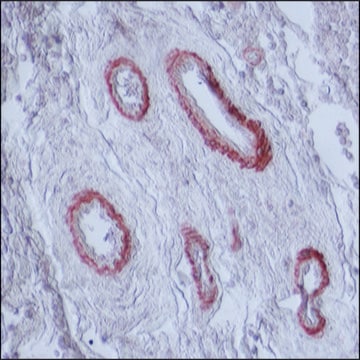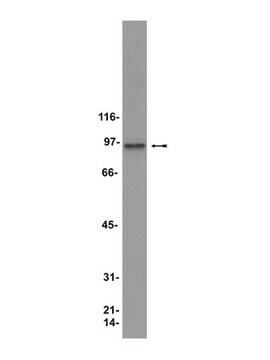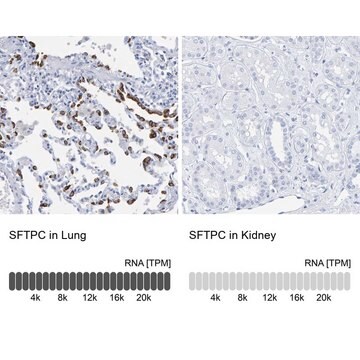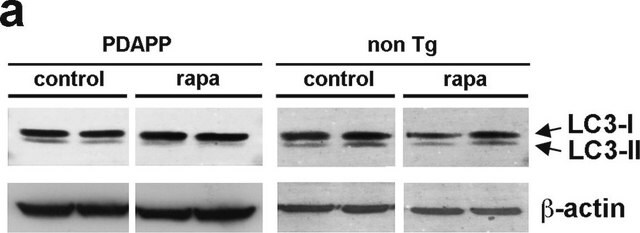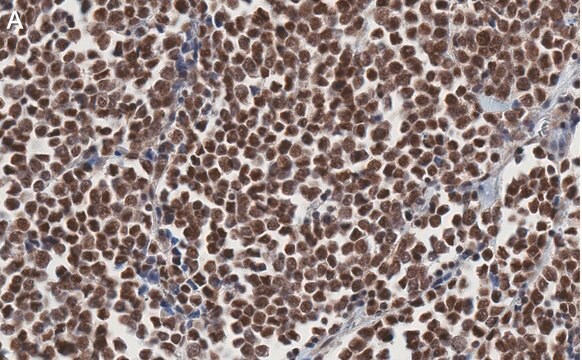MABC953
Anti-Prohibitin-2/PHB2 Antibody, clone 7F8E3
clone 7F8E3, from rat
Synonim(y):
Prohibitin-2, B-cell receptor-associated protein BAP37, D-prohibitin, Repressor of estrogen receptor activity, Prohibitin-2/PHB2
About This Item
Polecane produkty
pochodzenie biologiczne
rat
Poziom jakości
forma przeciwciała
purified immunoglobulin
rodzaj przeciwciała
primary antibodies
klon
7F8E3, monoclonal
reaktywność gatunkowa
rat, monkey, human, mouse
metody
immunocytochemistry: suitable
immunohistochemistry: suitable (paraffin)
western blot: suitable
izotyp
IgG2aκ
numer dostępu NCBI
numer dostępu UniProt
Warunki transportu
wet ice
docelowa modyfikacja potranslacyjna
unmodified
informacje o genach
human ... PHB2(11331)
Opis ogólny
Specyficzność
Immunogen
Zastosowanie
Apoptosis & Cancer
Apoptosis - Additional
Immunocytochemistry Analysis: 4 µg/mL from a representative lot detected Prohibitin-2/PHB2 in A431 and HUVEC cells.
Immunohistochemistry Analysis: A 1:1,000 dilution from a representative lot detected Prohibitin-2/PHB2 in human breast and mouse liver tissue.
Immunohistochemistry Analysis: A representative lot detected upregulated Prohibitin-2 immunoreactivity at the glutathione S-transferase placental-form–positive (GST-P+) hepatocellular carcinoma (HCC) foci in frozen liver sections from rats subjected to hepatocarcinogenesis induction by N-nitrosodiethylamine (DEN) and Phenobarbital (PB) treatment (Kakehashi, A., et al. (2011). Toxicol Sci. 119(1):61-72).
Jakość
Western Blotting Analysis: 0.5 µg/mL of this antibody detected Prohibitin-2/PHB2 in 10 µg of rat C6 glioma cell lysate.
Opis wartości docelowych
Postać fizyczna
Przechowywanie i stabilność
Inne uwagi
Oświadczenie o zrzeczeniu się odpowiedzialności
Nie możesz znaleźć właściwego produktu?
Wypróbuj nasz Narzędzie selektora produktów.
Kod klasy składowania
12 - Non Combustible Liquids
Klasa zagrożenia wodnego (WGK)
WGK 1
Temperatura zapłonu (°F)
Not applicable
Temperatura zapłonu (°C)
Not applicable
Certyfikaty analizy (CoA)
Poszukaj Certyfikaty analizy (CoA), wpisując numer partii/serii produktów. Numery serii i partii można znaleźć na etykiecie produktu po słowach „seria” lub „partia”.
Masz już ten produkt?
Dokumenty związane z niedawno zakupionymi produktami zostały zamieszczone w Bibliotece dokumentów.
Nasz zespół naukowców ma doświadczenie we wszystkich obszarach badań, w tym w naukach przyrodniczych, materiałoznawstwie, syntezie chemicznej, chromatografii, analityce i wielu innych dziedzinach.
Skontaktuj się z zespołem ds. pomocy technicznej


